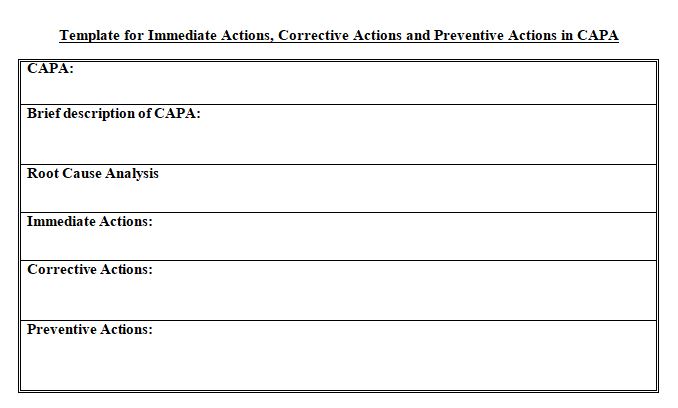This article will discuss the importance of Root Cause Analysis in a CAPA program, as well as provide some implementation strategies for successful Root Cause Analysis.
All Quality Issues Indiscriminately Sent Through CAPA System
- Definitely, time management issues will be inescapable when all issues are channeled through the CAPA quality framework. To stay away from overburden, noncompliance issues must be clearly defined further quality assurance department needs to be specific to define which noncompliance issues would go through their full CAPA channel.
Lack of Training in Use of Root Cause Analysis Tools and preconceived Ideas.
- Quality Assurance team must first identify the RCA tools that can potentially be used for investigations, and then train staff on how to use those tools successfully.
- Most popular effective root cause analytical tools include fishbone diagrams, 8D methods, and the “Five Whys” lean tools.
- Before starting Root Cause analysis, preconceived idea should be removed from analytical thinking of Investigator. These preconception problems can be rectified by implementing the appropriate RCA tools and documenting the process.
Insufficient Infrastructure such as Manpower and Time management
- Insufficient number of people or inexperience staff members is one the prime reasons for in-efficient CAPA implementation system. For example if only one employee is responsible for handling CAPAs, that individual will quickly become overburdened and their report will usually turn out be insufficient, however CAPA is handled by team then input would be more superior, factually correct and efficieint.
- It is also essential to train CAPA teams to collect proof of the corrective action’s effectiveness. a good CAPA system is going to have a documented procedure.
- Time is a critical commodity, and root cause analysis is not a fast and simple process, authority must commit to allotting the necessary time for staff to conduct investigations adequately.
Lack of measurement for efficiency of CAPA implementations.
- The efficiency of Corrective and Preventive actions should be verifiably and documentable. Internal audits has been proved to be one the best way to measure and quantify the implemented corrective actions.
Inability to Look at Other Areas Where Issues May Occur
- By excessive focusing on fixing the things that were broken, we often disregards possible preventive actions that can be applied on other products such as API or formulations.
- The initial step for effective preventive actions is to establish cross-functional team since it allows different sections to overview quality issues.
Market complaints and Customer complaints.
- Management commitment for following customer complaint or Market objections and studying its related data can also be helpful in making the case for CAPA improvements
Deficient Documentation
- The straightway for ensuring for regulatory compliance is to create a verifiable form that involves the necessary documented steps. At a least, this checklist form should include all the relevant information such as root cause analysis, corrective action, preventive actions and verifications.
- Preventive activities should have sufficient documentations such as protocols and reports further these reports should include a review of corrective actions taken and their possible output to other product lines.
Now that you know this:- hopefully you are in position to answer the Assignment(s)
- Has the finalized CAPA solution eventually perform and produced the desired outcomes? If so percentage of CAPA solutions eventually produced desired outcomes?
- The total number of full time staff directly involved in closure of CAPA? Do you think it is sufficient?
- The average total time period required from initiation to completion of CAPA in present year? And compare it with last year has time period increased or decreased?
- Root Cause Analysis tools used by your staff in CAPA? Has sufficient training provided to them in using them?
- Does your organization use human error as an opportunity to improve your company’s quality culture?
(Note: When human mistake is suggested more regularly than it is expected to occur, it gives inference to reviewers that problems aren’t being reviewed for Root Cause Analysis, organization isn’t allotting required time and resources (this is just an example or case study).

In conclusion, Root Cause Analysis is a critical component of any effective CAPA program. By implementing the strategies discussed in this article, organizations can enhance their CAPA programs and drive continuous improvement.